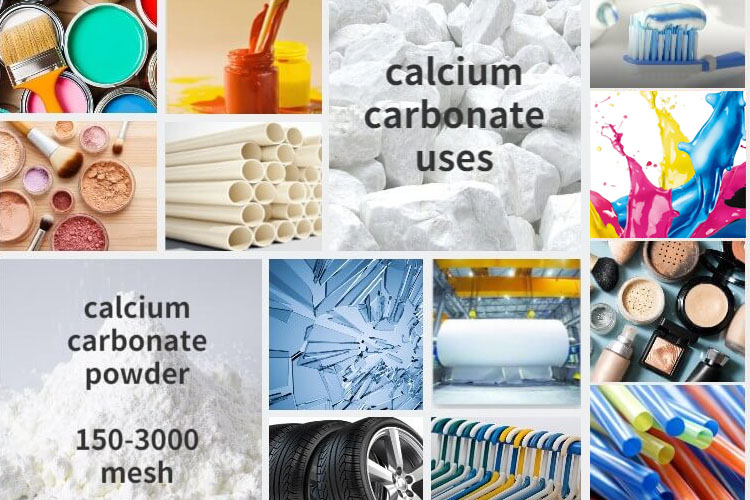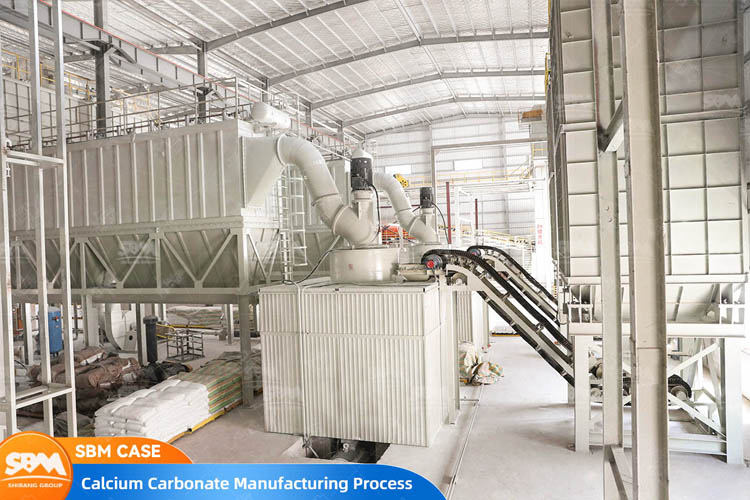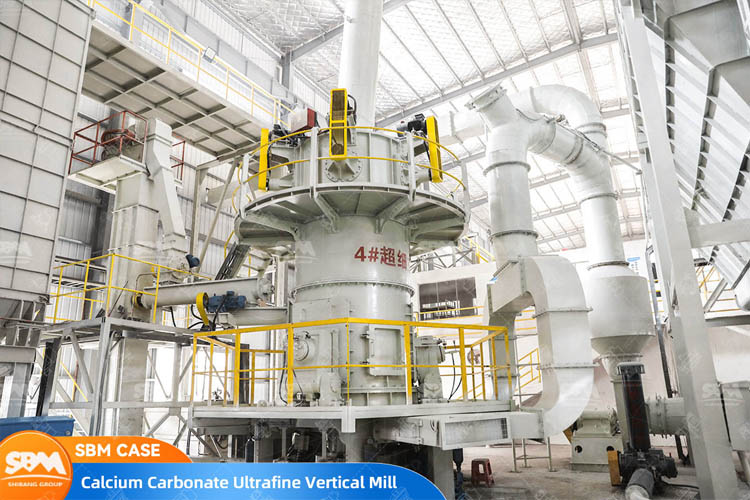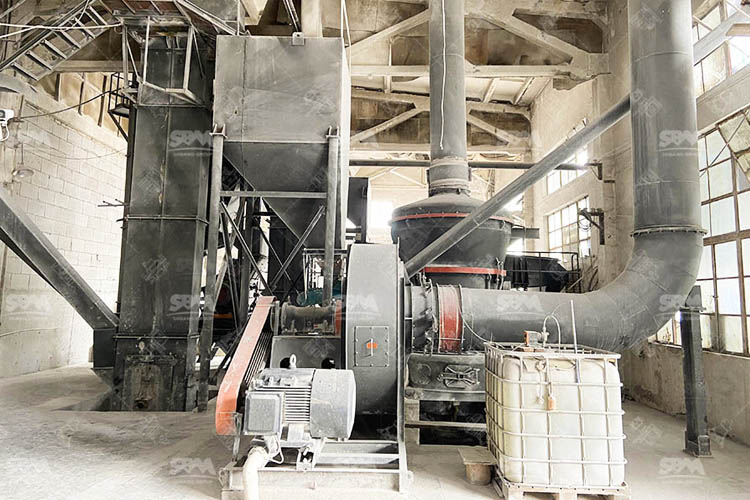Calcium Carbonate Manufacturing Process and Grinding Mills
Calcium carbonate is a common inorganic compound widely used in various industries, including paper, plastics, paints, coatings, and food. The manufacturing process of calcium carbonate depends on the raw materials used and the type of end product required.

This blog will share with you calcium carbonate manufacturing process and how to choose best calcium carbonate grinding machine.
Calcium Carbonate Manufacturing Process
The manufacturing process of calcium carbonate involves several steps, including extraction, crushing, grinding, classification, purification, and packaging. Here is a general overview of the process:
Extraction: Calcium carbonate is typically extracted from limestone, which is a sedimentary rock composed of calcium carbonate. The limestone is usually mined from quarries or open-pit mines and then crushed into small pieces.
Crushing and grinding: The crushed limestone is then ground into a fine powder using a variety of grinding mills, such as ball mills, roller mills, or jet mills. This process helps to increase the surface area of the calcium carbonate, making it easier to extract and purify.

Classification: After grinding, the calcium carbonate powder is classified into different sizes using a separator. This is done to ensure that the powder meets the desired specifications for use in different applications.
Purification: In some cases, the calcium carbonate powder may need to be purified to remove impurities that may affect its performance in certain applications. Purification can be done using a variety of methods, such as flotation or chemical treatment.
Precipitation: In this step, calcium hydroxide is added to the purified calcium carbonate solution to precipitate calcium carbonate crystals. The crystals are then filtered, washed, and dried to produce a fine powder.
Surface treatment: Calcium carbonate can be modified to enhance its properties for specific applications. For example, surface treatment can be used to improve the dispersibility of the powder in liquids, or to enhance its compatibility with other materials.
Packaging and distribution: Once the calcium carbonate powder has been processed, purified, and modified (if necessary), it is packaged and distributed to customers in various industries.
The specific process used to manufacture calcium carbonate may vary depending on the source of the mineral and the desired properties of the final product. However, the general steps outlined above are typically used in most calcium carbonate manufacturing operations.
What is the Best Calcium Carbonate Grinding Mill?
Calcium carbonate grinding mills are an important part of the calcium carbonate processing process. These mills are used to grind the calcium carbonate into a fine powder, which is then used in various applications. There are several types of calcium carbonate grinding mills available, including ball mills, roller mills, and hammer mills. Each type of mill uses a different grinding mechanism to break down the calcium carbonate particles.
Here are some commonly used calcium carbonate grinding machines:
Ultrafine Vertical Mill: This type of mill uses a series of rollers to crush the material against a grinding plate. The crushed material is then transported by air to a separator, where the coarse particles fall back onto the grinding plate, and the fine particles are collected as the final product.

Ball Mill: A ball mill is a cylindrical device filled with steel balls that grind the material by tumbling within the mill. The balls impact and grind the material, which is then discharged through a grate.
Raymond Mill: Also known as a roller mill, this mill uses a central vertical shaft to hold and rotate grinding rollers against a stationary grinding ring. The crushed material is fed between the rollers and the grinding ring, where it is ground into fine particles.

Hammer Mill: A hammer mill uses a series of hammers attached to a rotor to crush the material against a perforated screen. The crushed material then passes through the screen and is collected as the final product.
How to Choose the Right Calcium Carbonate Grinding Mill?
There are several factors to consider when choosing a grinding mill for calcium carbonate processing, including the desired particle size, the capacity of the mill, the energy consumption, and the cost of the mill. Here are some tips for choosing the right grinding mill:
Particle Size: The size of the particles produced by the grinding mill is an important factor to consider when choosing a mill. Different applications require different particle sizes, so it is important to choose a mill that can produce the desired particle size.
Capacity: The capacity of the mill is another important factor to consider. The capacity of the mill will depend on the size of the mill and the amount of material that can be processed at one time.
Energy Consumption: The energy consumption of the mill is another important factor to consider. It is important to choose a mill that is energy-efficient to reduce operating costs.
Cost: The cost of the mill is another important factor to consider. It is important to choose a mill that is cost-effective and provides a good return on investment.
Overall, choosing the right grinding mill for calcium carbonate processing depends on several factors, including the desired particle size, the capacity of the mill, the energy consumption, and the cost of the mill.